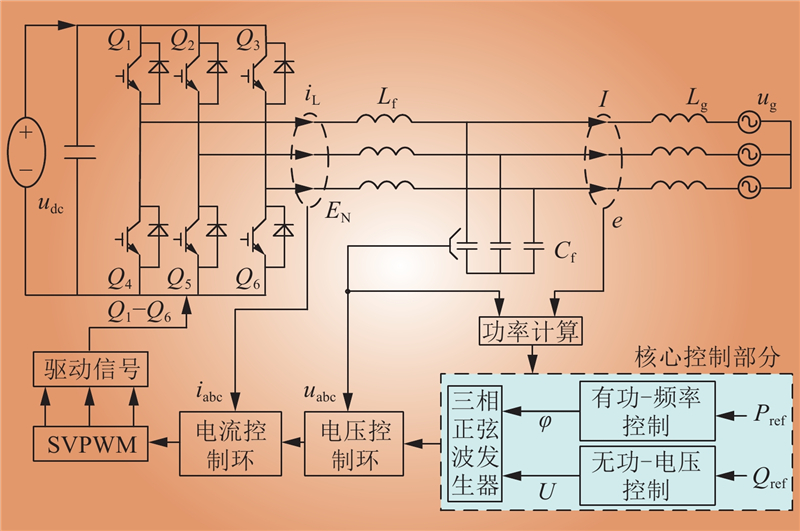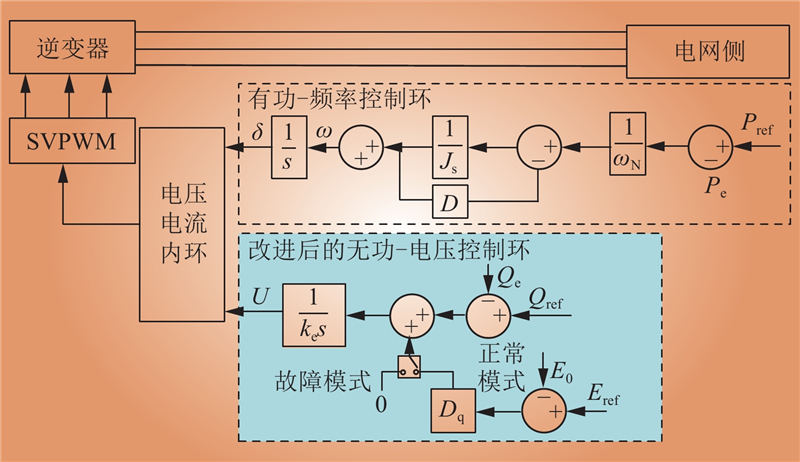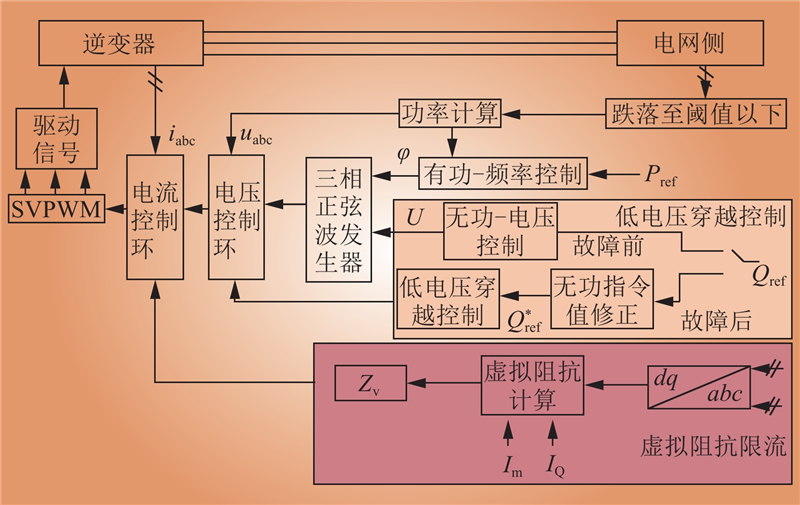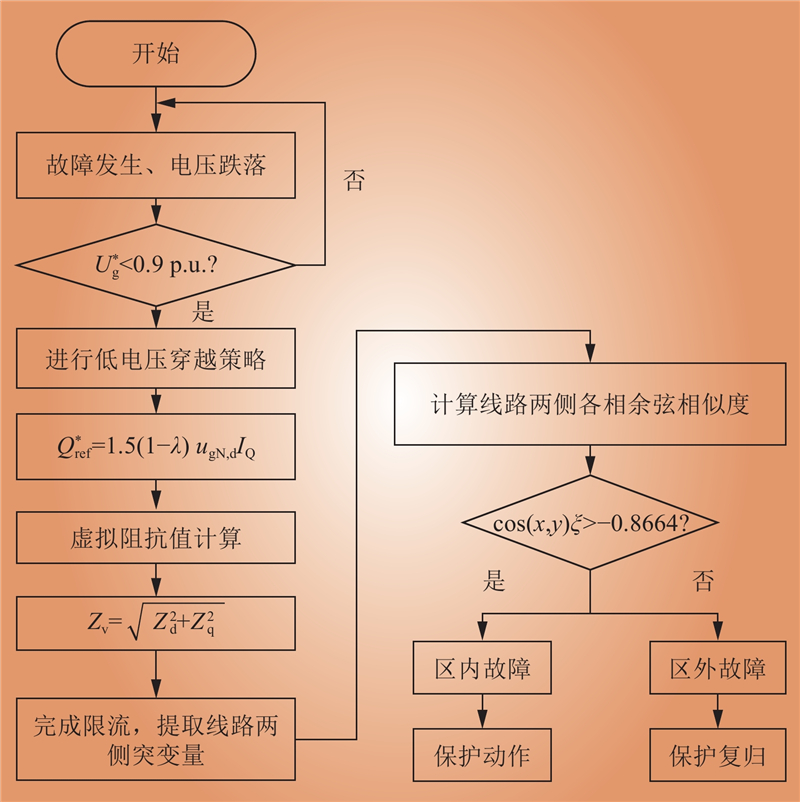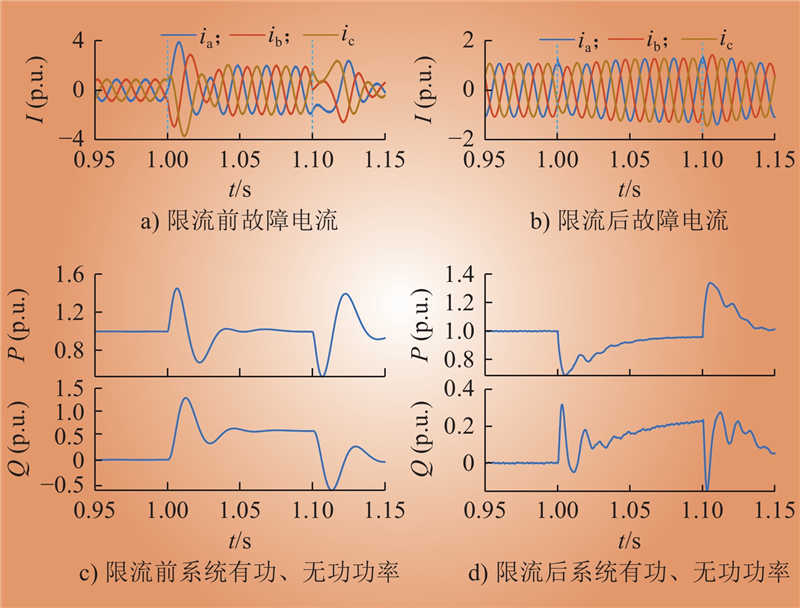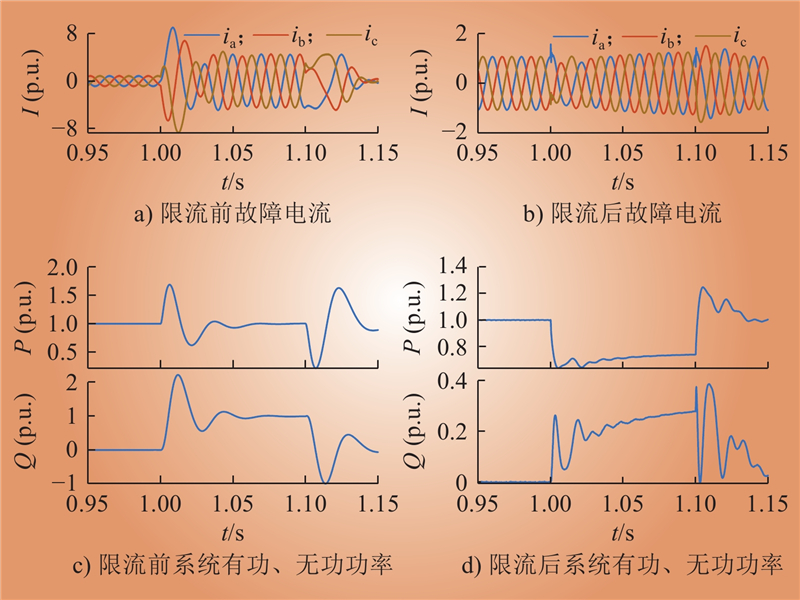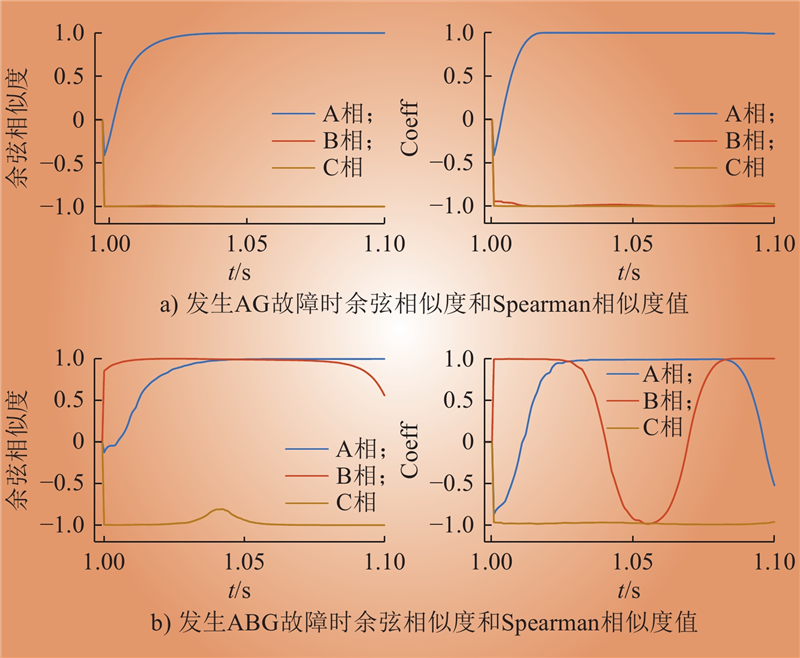| 1 |
王瑞欣, 孙吉广, 刘艳, 等. 计及新能源场站黑启动时空支撑能力的分区目标网架优化[J]. 中国电力, 2024, 57 (10): 143- 149.
DOI
|
|
WANG Ruixin, SUN Jiguang, LIU Yan, et al. Optimization of power system black start partition target network taking into account the black start space-time support capability of new energy station[J]. Electric Power, 2024, 57 (10): 143- 149.
DOI
|
| 2 |
张睿骁, 梁利, 王定美. 新能源场站快速频率响应分析与高效测试装置设计[J]. 中国电力, 2025, 58 (5): 144- 151.
DOI
|
|
ZHANG Ruixiao, LIANG Li, WANG Dingmei. Fast frequency response analysis and efficient test device design of new energy station[J]. Electric Power, 2025, 58 (5): 144- 151.
DOI
|
| 3 |
周洋, 黄德志, 李培栋, 等. 考虑平衡端点相位不对称及光伏接入的低压配电网三相潮流模型[J]. 中国电力, 2024, 57 (10): 190- 198.
DOI
|
|
ZHOU Yang, HUANG Dezhi, LI Peidong, et al. A three-phase power flow model for low-voltage distribution networks considering balanced bus phase asymmetry and photovoltaic access[J]. Electric Power, 2024, 57 (10): 190- 198.
DOI
|
| 4 |
杜夏恒, 赫玉莹, 邹文, 等. 跟网型和构网型逆变器的阻抗无源化方法综述[J]. 东北电力大学学报, 2024, 44 (2): 12- 20.
|
|
DU Xiaheng, HE Yuying, ZOU Wen, et al. An overview of impedance passivation methods forGrid-following and grid-forming inverters[J]. Journal of Northeast Electric Power University, 2024, 44 (2): 12- 20.
|
| 5 |
兰国芹, 陆烨, 阚严生, 等. 综合能源服务发展趋势与对策研究[J]. 发电技术, 2025, 46 (1): 19- 30.
DOI
|
|
LAN Guoqin, LU Ye, KAN Yansheng, et al. Research on the development trends and countermeasures of integrated energy services[J]. Power Generation Technology, 2025, 46 (1): 19- 30.
DOI
|
| 6 |
周洋, 施正香, 洪灿梅, 等. 基于电网跳闸数据分析的供电线路异常状态预警方法[J]. 电网与清洁能源, 2023, 39 (9): 40- 46.
DOI
|
|
ZHOU Yang, SHI Zhengxiang, HONG Canmei, et al. An early warning method of abnormal state of power supply line based on the analysis of power network trip data[J]. Power System and Clean Energy, 2023, 39 (9): 40- 46.
DOI
|
| 7 |
李亚楼, 赵飞, 樊雪君. 构网型储能及其应用综述[J]. 发电技术, 2025, 46 (2): 386- 398.
DOI
|
|
LI Yalou, ZHAO Fei, FAN Xuejun. Review of grid-forming energy storage and its applications[J]. Power Generation Technology, 2025, 46 (2): 386- 398.
DOI
|
| 8 |
张心怡, 杨波. 考虑构网型和跟网型变流器的孤岛微电网小信号稳定性分析[J]. 综合智慧能源, 2024, 46 (2): 12- 18.
DOI
|
|
ZHANG Xinyi, YANG Bo. Stability analysis on islanded microgrids with grid-forming and grid-following converters[J]. Integrated Intelligent Energy, 2024, 46 (2): 12- 18.
DOI
|
| 9 |
项中明, 倪秋龙, 李振华, 等. 采用功率同步控制的构网型换流器并网暂态同步稳定研究[J]. 浙江电力, 2023, 42 (9): 77- 88.
|
|
XIANG Zhongming, NI Qiulong, LI Zhenhua, et al. Research on transient synchronous stability of integrated grid-forming converters using power synchronization control[J]. Zhejiang Electric Power, 2023, 42 (9): 77- 88.
|
| 10 |
温春雪, 毛健, 王鹏, 等. 基于虚拟同步发电机的构网型光储变流器控制策略研究[J]. 内蒙古电力技术, 2024, 42 (1): 1- 8.
|
|
WEN Chunxue, MAO Jian, WANG Peng, et al. Research on control strategy of grid-configured photovoltaic storage converters based on VSG[J]. Inner Mongolia Electric Power, 2024, 42 (1): 1- 8.
|
| 11 |
朱作滨, 孙树敏, 丁月明, 等. 基于VSG的低电压穿越控制策略研究[J]. 太阳能学报, 2024, 45 (2): 376- 383.
|
|
ZHU Zuobin, SUN Shumin, DING Yueming, et al. Study on low voltage ride through control strategy based on vsg[J]. Acta Energiae Solaris Sinica, 2024, 45 (2): 376- 383.
|
| 12 |
贾科, 刘芸, 毕天姝, 等. 基于自适应虚拟阻抗的构网型新能源电源不对称故障穿越控制[J]. 中国电机工程学报, 2025, 45 (8): 2946- 2956.
|
|
JIA Ke, LIU Yun, BI Tianshu, et al. Asymmetric fault ride through of grid-forming control of renewable energy based on adaptive virtual impedance[J]. Proceedings of the CSEE, 2025, 45 (8): 2946- 2956.
|
| 13 |
FAN B, LIU T, ZHAO F Z, et al. A review of current-limiting control of grid-forming inverters under symmetrical disturbances[J]. IEEE Open Journal of Power Electronics, 2022, 3, 955- 969.
DOI
|
| 14 |
LI T, LI Y L, CHEN X L, et al. Research on AC microgrid with current-limiting ability using power-state equation and improved Lyapunov-function method[J]. IEEE Journal of Emerging and Selected Topics in Power Electronics, 2021, 9 (6): 7306- 7319.
DOI
|
| 15 |
颜湘武, 贾焦心, 王德胜, 等. 虚拟同步发电机的并网功率控制及模式平滑切换[J]. 电力系统自动化, 2018, 42 (9): 91- 99.
DOI
|
|
YAN Xiangwu, JIA Jiaoxin, WANG Desheng, et al. Power control and smooth mode switchover for grid-connected virtual synchronous generators[J]. Automation of Electric Power Systems, 2018, 42 (9): 91- 99.
DOI
|
| 16 |
刘远, 孟建辉, 王健维, 等. 基于虚拟电容的构网型MMC快速平滑切换策略[J]. 电力系统及其自动化学报, 2024, 36 (6): 12- 22.
|
|
LIU Yuan, MENG Jianhui, WANG Jianwei, et al. Fast and smooth switching strategy for grid-forming MMC based on virtual capacitors[J]. Proceedings of the CSU-EPSA, 2024, 36 (6): 12- 22.
|
| 17 |
尚磊, 胡家兵, 袁小明, 等. 电网对称故障下虚拟同步发电机建模与改进控制[J]. 中国电机工程学报, 2017, 37 (2): 403- 412.
|
|
SHANG Lei, HU Jiabing, YUAN Xiaoming, et al. Modeling and improved control of virtual synchronous generators under symmetrical faults of grid[J]. Proceedings of the CSEE, 2017, 37 (2): 403- 412.
|
| 18 |
XIONG L S, LIU X K, ZHAO C Y, et al. A fast and robust real-time detection algorithm of decaying DC transient and harmonic components in three-phase systems[J]. IEEE Transactions on Power Electronics, 2020, 35 (4): 3332- 3336.
DOI
|
| 19 |
季亮, 俞紫琳, 李博通, 等. 基于提升距离保护适应性的改进VSG控制策略研究[J]. 智慧电力, 2024, 52 (6): 9- 15, 70.
DOI
|
|
JI Liang, YU Zilin, LI Botong, et al. Improved VSG control strategy to enhance the adaptability of distance protection[J]. Smart Power, 2024, 52 (6): 9- 15, 70.
DOI
|
| 20 |
段建东, 崔帅帅, 刘吴骥, 等. 基于电流频率差的有源配电网线路保护[J]. 中国电机工程学报, 2016, 36 (11): 2927- 2934.
|
|
DUAN Jiandong, CUI Shuaishuai, LIU Wuji, et al. Line protection based on current frequency difference for active distribution network[J]. Proceedings of the CSEE, 2016, 36 (11): 2927- 2934.
|
| 21 |
贾科, 杨哲, 魏超, 等. 基于斯皮尔曼等级相关系数的新能源送出线路纵联保护[J]. 电力系统自动化, 2020, 44 (15): 103- 111.
|
|
JIA Ke, YANG Zhe, WEI Chao, et al. Pilot protection based on spearman rank correlation coefficient for transmission line connected to renewable energy source[J]. Automation of Electric Power Systems, 2020, 44 (15): 103- 111.
|
| 22 |
彭放, 高厚磊, 郭一飞, 等. 构网逆变电源故障穿越控制策略及其对保护影响的研究综述[J]. 电网技术, 2024, 48 (9): 3673- 3685.
|
|
PENG Fang, GAO Houlei, GUO Yifei, et al. A review of fault ride-through control strategies of grid-forming inverter-based resources and the influence on protection[J]. Power System Technology, 2024, 48 (9): 3673- 3685.
|
| 23 |
廖晓玉, 臧睿, 胡家跃. 光纤电流差动保护及其整定计算[J]. 继电器, 2006, 34 (21): 9- 13.
|
|
LIAO Xiaoyu, ZANG Rui, HU Jiayue. Line fiber optical differential protection and its setting calculation[J]. Relay, 2006, 34 (21): 9- 13.
|
| 24 |
邢鹏翔, 贾璇悦, 许长清, 等. VSG低电压穿越的特性分析及控制方法研究[J]. 电网与清洁能源, 2022, 38 (8): 130- 137, 143.
DOI
|
|
XING Pengxiang, JIA Xuanyue, XU Changqing, et al. A study on characteristic analysis and control methods of low voltage ride through for the VSG[J]. Advances of Power System & Hydroelectric Engineering, 2022, 38 (8): 130- 137, 143.
DOI
|
| 25 |
刘航, 王跃, 刘永慧, 等. 基于定量设计虚拟阻抗的VSG低电压穿越策略[J]. 高电压技术, 2022, 48 (1): 245- 256.
|
|
LIU Hang, WANG Yue, LIU Yonghui, et al. The LVRT strategy for VSG based on the quantitatively designed virtual impedance[J]. High Voltage Engineering, 2022, 48 (1): 245- 256.
|
| 26 |
毕天姝, 李彦宾, 贾科, 等. 基于暂态电流波形相关性的新能源场站送出线路纵联保护[J]. 中国电机工程学报, 2018, 38 (7): 2012- 2019, 2216.
|
|
BI Tianshu, LI Yanbin, JIA Ke, et al. Transient current waveform similarity based pilot protection for transmission lines connected to renewable energy power plants[J]. Proceedings of the CSEE, 2018, 38 (7): 2012- 2019, 2216.
|
| 27 |
朱佳, 王峰, 李一泉, 等. 基于Tanimoto相似度的变压器零序差动保护约束方案[J]. 中国电力, 2023, 56 (8): 193- 199.
DOI
|
|
ZHU Jia, WANG Feng, LI Yiquan, et al. Restraint scheme of transformer zero sequence differential protection based on tanimoto similarity[J]. Electric Power, 2023, 56 (8): 193- 199.
DOI
|
| 28 |
贾科, 郑黎明, 毕天姝, 等. 基于余弦相似度的风电场站送出线路纵联保护[J]. 中国电机工程学报, 2019, 39 (21): 6263- 6275.
|
|
JIA Ke, ZHENG Liming, BI Tianshu, et al. Pilot protection based on cosine similarity for transmission line connected to wind farms[J]. Proceedings of the CSEE, 2019, 39 (21): 6263- 6275.
|
| 29 |
武奕彤, 高厚磊, 袁通, 等. 基于特勒根定理的风场送出线路新型纵联保护[J]. 电力系统保护与控制, 2023, 51 (6): 117- 126.
|
|
WU Yitong, GAO Houlei, YUAN Tong, et al. Novel pilot protection for wind farm transmission lines based on Tellegen's theorem[J]. Power System Protection and Control, 2023, 51 (6): 117- 126.
|


